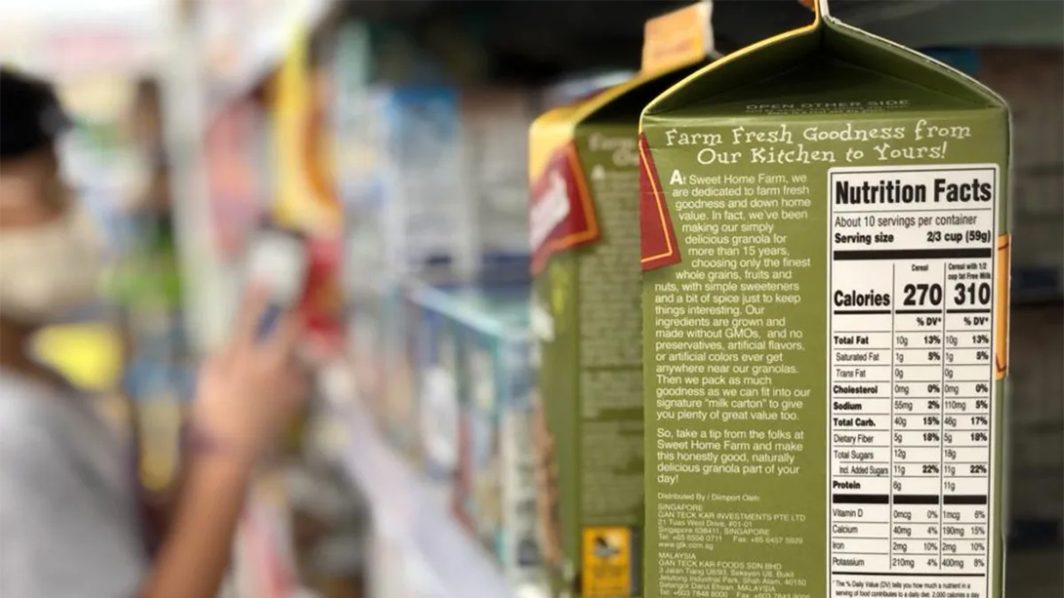
With today’s health conscious consumer,![]() food manufacturers are
food manufacturers are
well aware that a primary concern of the public is health and
eating healthy foods. Since marketing plays a huge role in
product sales, marketing tactics paint a blurry picture designed
to entice you, not educate you.
In an effort to provide the public with what they want, food
manufacturers use unclear marketing statements like “Reduced Fat”
and “98% Fat Free.” Beware of products boasting these types of
claims. Just because a product label claims “reduced fat” or
“light” doesn’t mean it’s healthy, or low in fat.
There are several marketing descriptions companies use to coax
you to purchase a lower fat version of a product. The best way
to protect yourself and not fall prey to misleading marketing
tactics is to learn how to properly read product labels and
interpret common marketing catch phrases.
* Low Calorie – Fewer than 40 calories per serving.
* Low Fat – 3 grams of fat or less per serving.
* Low Cholesterol – 20 milligrams of cholesterol or less per
serving, and 2 grams or less of saturated fat per serving.
* Low Sodium – 140 milligrams or less per serving.
* Very Low Sodium – 35 milligrams or less per serving.
* Lean – Less than 10 grams of fat, 4.5 grams of saturated fat,
and less than 95 milligrams of cholesterol per serving.
* Extra Lean – Less than 5 grams of fat, 2 grams of saturated
fat, and 95 milligrams of cholesterol per serving.
* Fat Free – Less than 0.5 grams of fat per serving
* Light – Half the fat of the regular version
* Reduced Fat – 25% less fat than the regular version
Whenever you are reading a label, the important things to take
into consideration for weight management are:
1. The number of calories per serving
2. The number of servings per container
3. Calories from fat
4. Calories per gram – For instance, whole milk has 9 fat
calories per gram, 4 carbohydrate calories per gram, and 4
protein calories per gram.
Milk is probably the number one product that the public has
misconceptions about. Regular whole milk is about 50% fat! Out
of 150 calories per serving, 70 calories come from fat. Many
consumers falsely believe that 1% milk contains only 1% of the
fat that whole milk contains. This is just another unsavory
advertising tactic. The fact is that in 2% milk, 40% of the
calories come from fat, and in 1% milk, 30% of the calories come
from fat. Although they are lower in fat than whole milk, by no
means are they healthy and low in fat.
Recently, I tried Tuscan’s Supreme Milk which is 100% fat free
and I have to say, it wasn’t bad. It is only 100 calories per
serving with 0 calories from fat. It tastes similar to 2% milk
while providing you with all of the nutritional benefits of skim
milk.
Another thing that can mislead consumers is serving size. Many
times you will look at a product believing that the container
contains one serving, and the caloric and nutritional breakdown
are accurate for the entire container. For instance, a can of
tuna may state that there are 70 calories per serving, but when
you look at the number of servings in the can, it reads
approximately two and a half.
By reading labels and understanding the food manufacturers
marketing jargon, you can sift through the hype, and make
healthy, intelligent food choices. The next time you head to the
store to stock up on “healthy foods”, don’t forget your reading
glasses!




